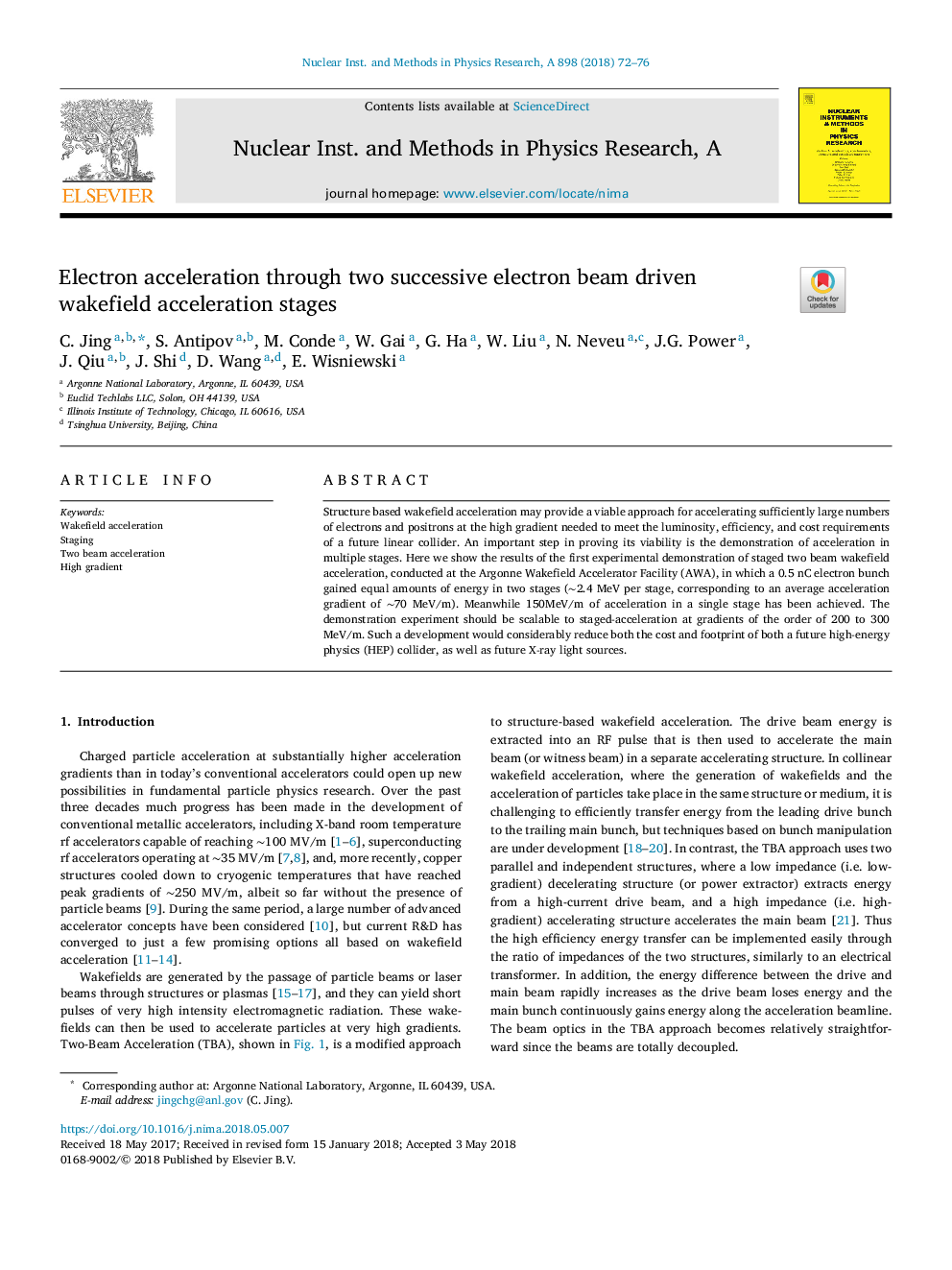| Article ID | Journal | Published Year | Pages | File Type |
|---|---|---|---|---|
| 8166131 | Nuclear Instruments and Methods in Physics Research Section A: Accelerators, Spectrometers, Detectors and Associated Equipment | 2018 | 5 Pages |
Abstract
Structure based wakefield acceleration may provide a viable approach for accelerating sufficiently large numbers of electrons and positrons at the high gradient needed to meet the luminosity, efficiency, and cost requirements of a future linear collider. An important step in proving its viability is the demonstration of acceleration in multiple stages. Here we show the results of the first experimental demonstration of staged two beam wakefield acceleration, conducted at the Argonne Wakefield Accelerator Facility (AWA), in which a 0.5 nC electron bunch gained equal amounts of energy in two stages (â¼2.4 MeV per stage, corresponding to an average acceleration gradient of â¼70 MeV/m). Meanwhile 150MeV/m of acceleration in a single stage has been achieved. The demonstration experiment should be scalable to staged-acceleration at gradients of the order of 200 to 300 MeV/m. Such a development would considerably reduce both the cost and footprint of both a future high-energy physics (HEP) collider, as well as future X-ray light sources.
Related Topics
Physical Sciences and Engineering
Physics and Astronomy
Instrumentation
Authors
C. Jing, S. Antipov, M. Conde, W. Gai, G. Ha, W. Liu, N. Neveu, J.G. Power, J. Qiu, J. Shi, D. Wang, E. Wisniewski,
